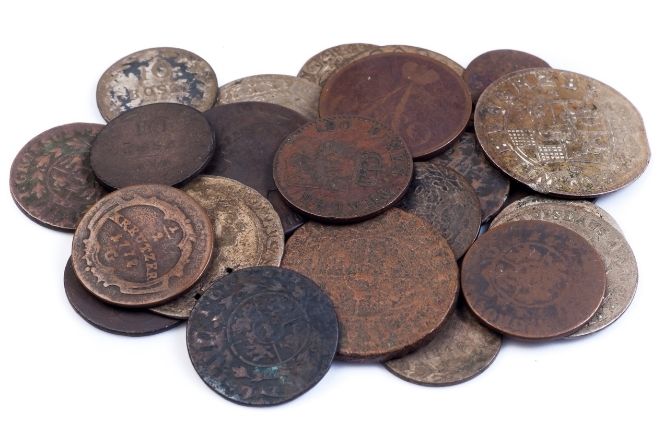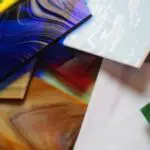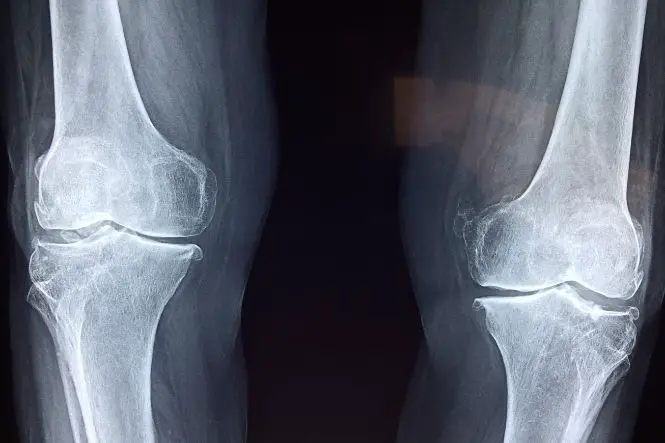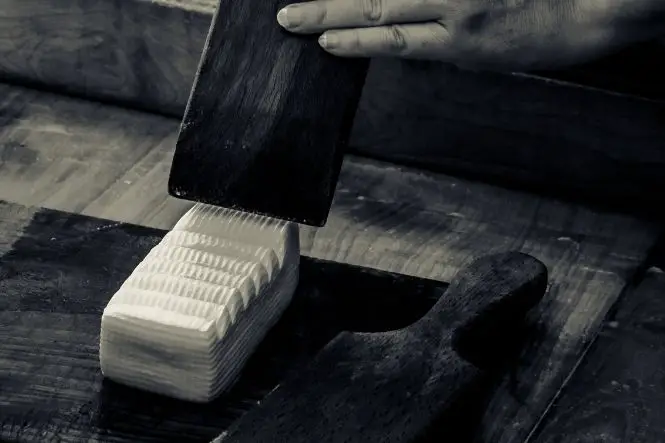New pennies and two pence pieces are bright copper, but after a while, they turn dull. This is because the copper reacts with oxygen in the air to form copper oxide, which is black and makes coins less shiny. In a similar way, iron and steel form iron oxide on their surfaces – this is reddish orange and is called rust.
Making Coins Shiny
To make copper coins shiny again, put them in vinegar. The acetic acid in the vinegar reacts with the copper oxide to form copper acetate, which dissolves in the vinegar, leaving shiny copper metal. The phosphoric acid in Coca Cola also cleans copper coins. What happens if you leave out the acid (i.e. just put the coin in water)?
Making Coins Green
Soak a handful of copper coins in a bowl of vinegar with a spoonful of salt stirred in. The vinegar will remove the copper oxide, making the coins shiny. Take the coins out, rinse and dry one carefully, and put the others on a kitchen towel for a few hours or overnight without drying them. If nothing has happened, soak the kitchen towel with the salt and vinegar solution and leave for up to a week.
Compare the rinsed and dried coin (the ‘control’) with the unrinsed coins. The surface of the unrinsed coins should begin to turn a blue-ish green. This is called ‘verdigris’. What happens if you miss out the acid (i.e. just use salt and water) or miss out the salt (i.e. just use vinegar)? Do other acids, like lemon juice, work?
Verdigris can be a number of different copper compounds. It may be copper carbonate (combining copper and carbon dioxide from the air), copper chloride (combining copper and chloride from the salt – sodium chloride) or copper (II) acetate (combining copper and acetate from the acetic acid in the vinegar. Copper roofs on buildings and copper statues develop a coating of verdigris. Copper (II) acetate used to be used as a pigment in oil paint until the 19th Century.
Try putting some (ungalvanized) iron or steel nails half into the salt and vinegar solution, and drop in a few metal paperclips. Leave them for a few hours or overnight and then look at the paperclips and the half of the nail that was in the solution. This should have a thin layer of copper plating, and may be covered in bubbles – this is hydrogen gas. The vinegar has copper acetate dissolved in it – this reacts with the iron in the nail and the paperclips, leaving a thin layer of copper behind, and producing hydrogen gas.
Hollow Coins
US one cent coins made after 1982 have a central core of zinc, coated with copper. Scratch the edge of a one cent coin using sandpaper to expose the zinc in the middle, and leave the coin in vinegar overnight. Look at the edge – is the zinc disappearing? It might take a while, but eventually the zinc will react with the vinegar, leaving a hollow copper shell.





